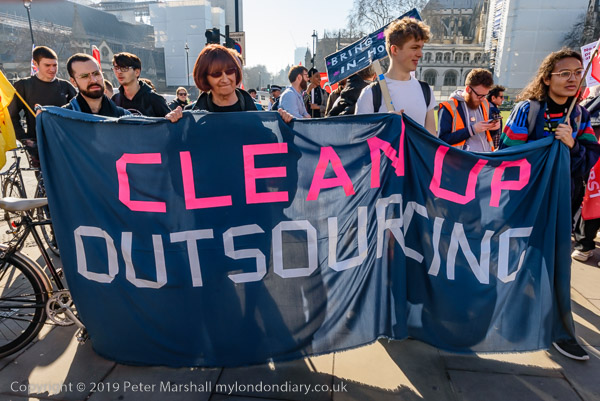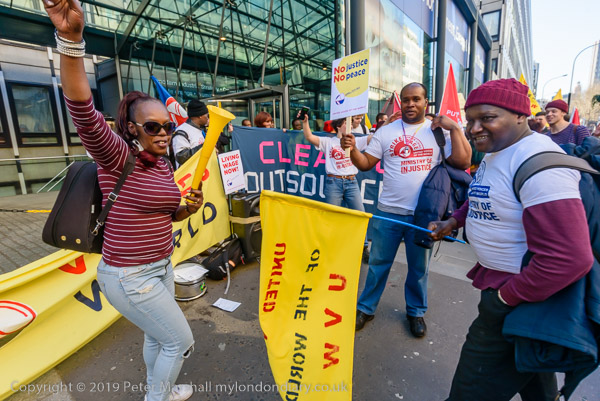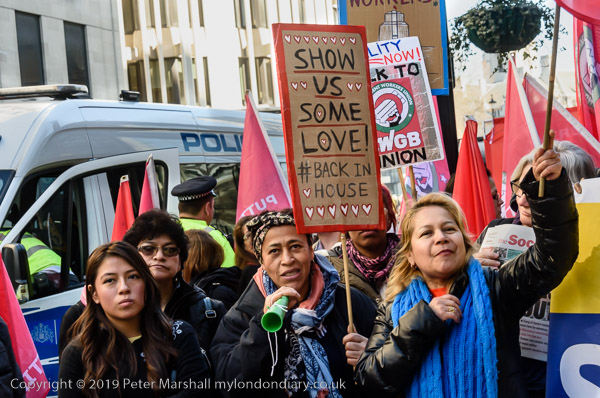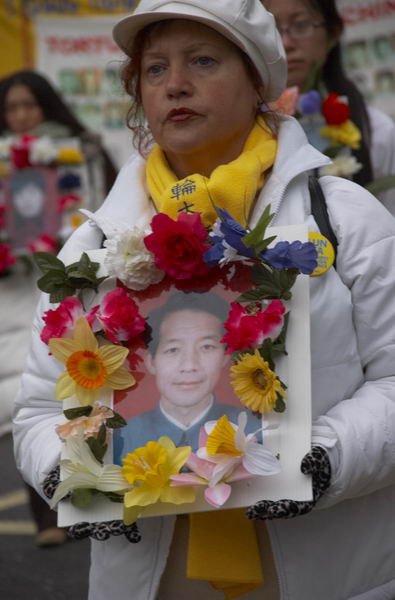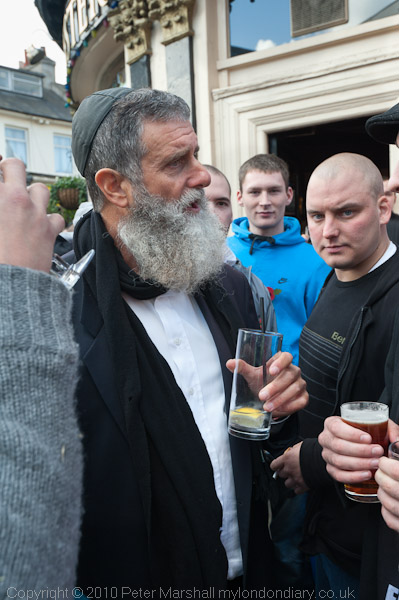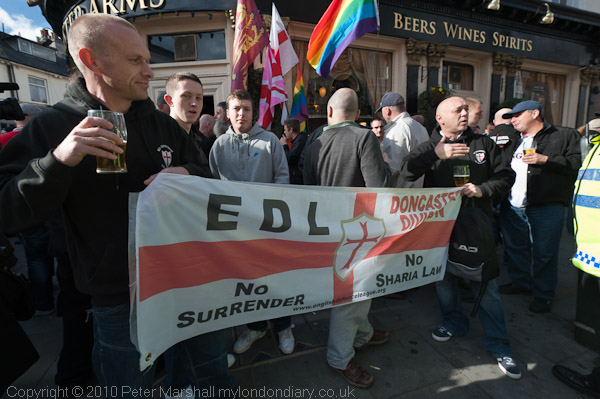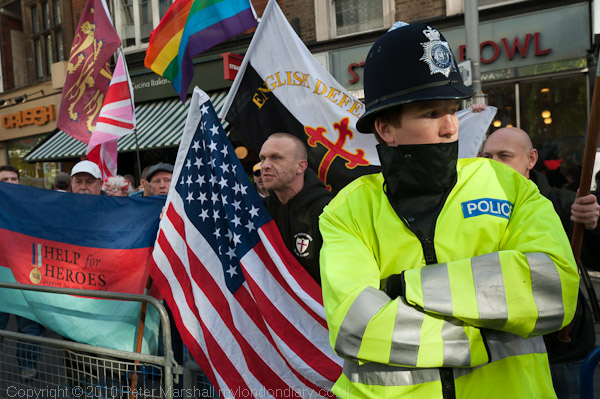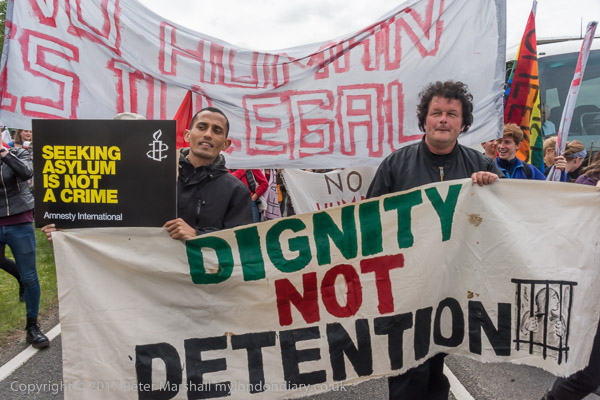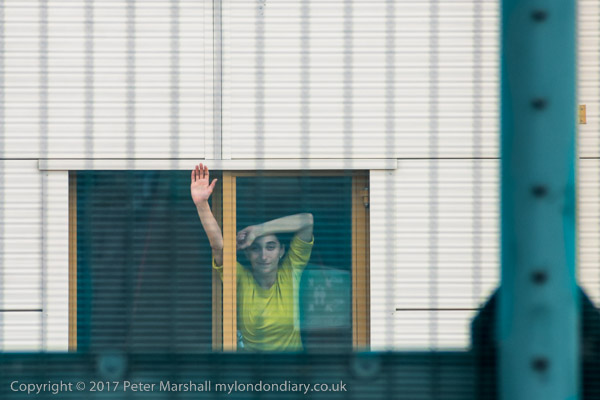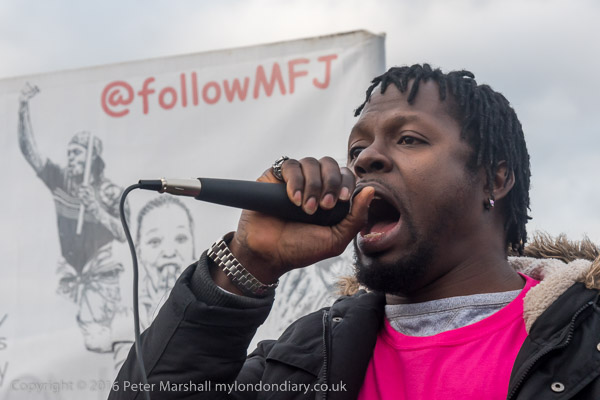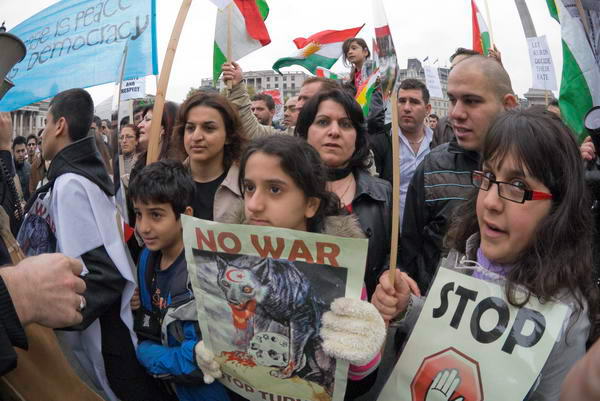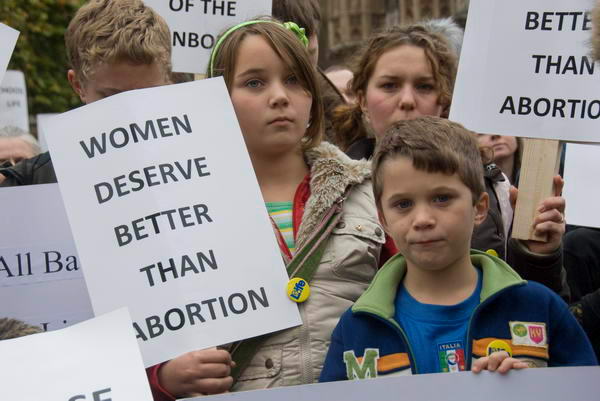UAF Oppose EDL Westminster March: There is a long history of protests where anti-fascists come to oppose marches and rallies by extreme right groups in London, including of course the Battle of Cable Street, but I think we have had more of them in recent years, if not on that same scale.
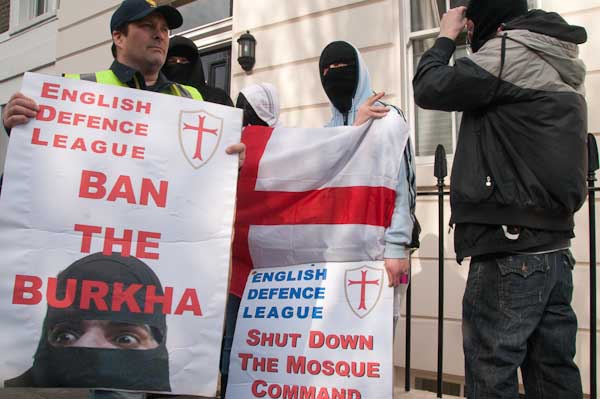
But looking back on my coverage of this event of Friday 5th March 2010 what we have seen different is the policing of such confrontations. The more recent such events have seen huge mobilisations of police to keep the two groups apart, with extensive use of double barriers with a large ‘sterile’ no go area between them, and often some fairly aggressive policing and arrests to achieve this.

Attending more recent events journalists and photographers have had to choose which side of the event to be at, with often rather long detours being needed to go between the two – and having a Press Card is seldom of any use.

In 2010 police did keep the two groups apart, but only on opposite pavements of the road in front of the Houses of Parliament, and as my photographs show, I was able to move fairly freely from side to side.

Unite Against Fascism had tried to block the road a couple of hours before the EDL march after holding their rally in Old Palace Yard on the north side, but were then forced across the road onto the opposite pavement by police. I wasn’t there to see this but was told by others that there had been a few arrests when people had refused to move.

I had walked away down Millbank where the EDL were to hold a rally before marching to Parliament. I was early and nobody was there but as I had expected there were several hundred at a packed pub a couple of hundred yards further on with many standing on the pavement outside.

Most were in in a good mood and happy to talk to me and other journalists about why they were protesting – and you can read more about this on My London Dairy. I think I represented them fairly in my article, though as always they felt strongly that they did not get fair treatment in the press. I felt that the coverage was generally fairly accurate, the problem was more with the views and actions of some EDL members rather than the reporting.

As I noted in my account: “Later during the actual march I did get sworn at, threatened and given the finger, but only by a small minority of marchers, and a young female Asian journalist seemed to attract considerably more aggravation than me. There was also a considerable amount of clearly anti-Muslim shouting and singing, and the placards and slogans that attack the building of mosques seem to threaten all Muslims rather than just the extremists. The atmosphere was unpleasant, and really gave the lie to the earlier denials of racism.”

I went along with them to the rally outside Tate Britain, but the start was delayed and they went back to the pub. When it did finally start the main speaker was the Sikh Amit Singh (Guramit Singh Kalirai), and his speech seemed to me at times to be clearly racist in its attacks on Muslims. Police took no action over this or his other speeches, but three years later he was jailed for taking part in a violent attempted armed robbery.

From there the EDL were escorted by police as they marched to Parliament and taken into a pen on the north side of the road opposite the UAF. As I commented, “The first thing that many of the EDL did on arriving in the pen was to urinate against the wall of Westminster Abbey” but mostly they shouted often racist abuse at the UAF who responded with calling them racists and fascists.

The EDL made great play of denying they were racists and showing off their few Black and Asian members to the press. But there was a hugely visible difference between their largely white male crowd and those across the road which reflected the multiracial nature of London – and where women were in a majority.

After around an hour of shouting across the road the UAF crowd began slowly to drift away. Police kept the EDL in their pen but did escort a few to Westminster Station.

I decided it was time to leave. As I commented I hadn’t enjoyed spending much of the afternoon in the company of the EDL “hearing their racism and right wing simplicities. It was an unpleasant way to spend an afternoon, but I think its important to show these events and these people honestly.”

More about the event and more pictures on My London Diary at UAF Oppose EDL Westminster March.
Flickr – Facebook – My London Diary – Hull Photos – Lea Valley – Paris
London’s Industrial Heritage – London Photos
All photographs on this page are copyright © Peter Marshall.
Contact me to buy prints or licence to reproduce.
